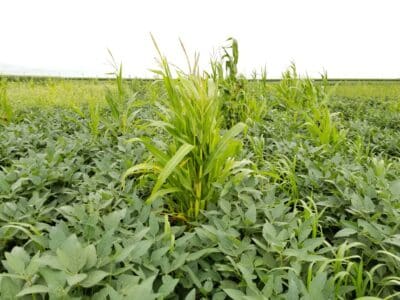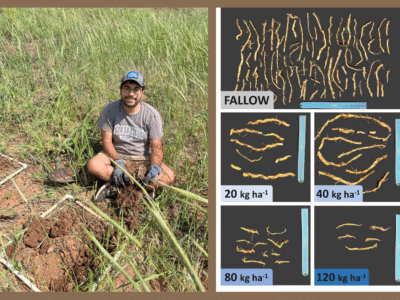If your soybean herbicide program needs a new wingman or two, Justine Fisher has two suggestions: cover crops and narrow soybean rows.
In addition to boosting soil health and pushing yield, these two agronomic practices are proving their worth as serious weed control tools, says Fisher, an agronomist with Syngenta Crop Protection.
“If you can implement another practice alongside herbicide use – narrow rows or planting green – that’s a win. Even if you’re only doing one of them – that’s better than none.”
Justine Fisher
In a newly published study from her graduate work at Michigan State University, Fisher concluded that either a cereal rye cover crop or narrow soybean rows can significantly suppress the number and size of herbicide-resistant horseweed (marestail).
The MSU study also showed that combining both practices could give farmers some breathing room during poor spring weather, by holding horseweed flushes at bay until fields were ready for postemergence herbicide applications.
“Instead of fully relying on herbicides, especially with the amount of resistance we’re seeing in weed species, these are other tools to utilize,” says Fisher, who conducted the research alongside MSU Extension weed scientist Christy Sprague.
“If you can implement another practice alongside herbicide use – narrow rows or planting green – that’s a win,” she says. “Even if you’re only doing one of them – that’s better than none.”
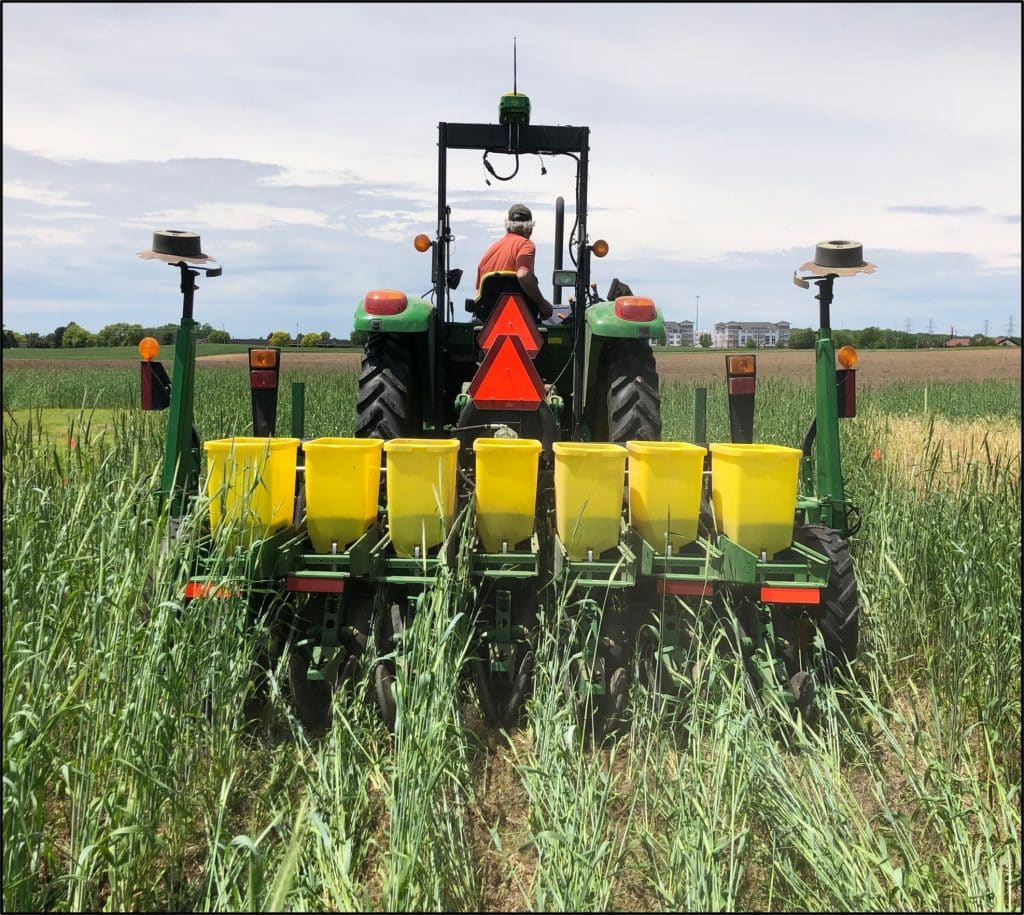
Cereal Rye Goes the Distance
Fisher and Sprague’s study included a fall-planted cereal rye cover crop, with some plots terminated one week prior to planting (planting brown), and some terminated one week after soybean planting (planting green).
Thanks to favorable weather, the rye was pretty bulky by the time it was terminated: 2,500 pounds/acre in the early terminated plots and over 3,800 pounds/acre in the planting green plots.
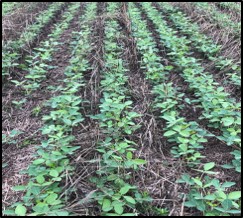

Right out of the gate, this substantial cereal rye biomass was a significant contributor to weed suppression, Fisher says. The cover crop was providing 71% to 90% suppression of horseweed across the experiment compared with the control when soybeans were in the V2 to V3 growth stage – before canopy closure and right before their postemergence application.
And the cereal rye’s suppression didn’t stop there. “Even in treatments where we used a non-effective postemergence herbicide application, the planting green cover crop plots suppressed horseweed all season long,” Fisher says. In those planting green plots, with no successful herbicide control, the cereal rye still reduced horseweed density by 42%.
Narrowing Down Weed Pressure
The study also examined three row spacings for soybeans: 7.5, 15 and 30 inches.
It took longer for the researchers to see a weed control boost from the narrower rows, but by the time July rolled around, there it was – both a reduction in horseweed density and height.
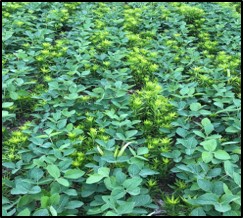

In the 7.5-inch and 15-inch rows, horseweed height was reduced by 5 to 7 inches compared with the 30-inch rows, Fisher recalls. “And that height reduction was strongly correlated with seed production,” she adds. “The narrow rows really reduced horseweed seed production due to those smaller plants.”
Even better, soybean yield was higher in the two narrower rows, outyielding the 30-inch rows by 11% to 18%. There was one exception to that – a single field where white mold took advantage of the crowded canopy and caused reduced yield, Fisher says.
The Combo Deal
When working together, these two management practices did their best work early in the season, shrinking horseweed density by 90% in planting green plots with narrow rows.
That could be a gamechanger for farmers navigating the short, unreliable spray windows of spring and early summer, Fisher notes.
“I think that’s a big takeaway,” she says. “The narrow rows and the cover crop combined were great tools for getting you to an effective postemergence application, by giving you more time to get to the field while weeds stayed smaller and less dense.”
Keep Herbicides in the Mix
Using an effective postemergence herbicide remains crucial, Fisher says.
Ultimately, the best weed control in her study came from plots where either planting green or narrow rows were combined with an effective postemergence application, Fisher says.
“You still need that effective post herbicide application to hit your highest yield potential,” she says.
You can find more information and resources from GROW on using narrow rows and cover crops to boost weed control. Watch a GROW video on using narrow rows as a weed management tool in soybeans here.
Text by Emily Unglesbee, GROW. Photos courtesy Justine Fisher.
